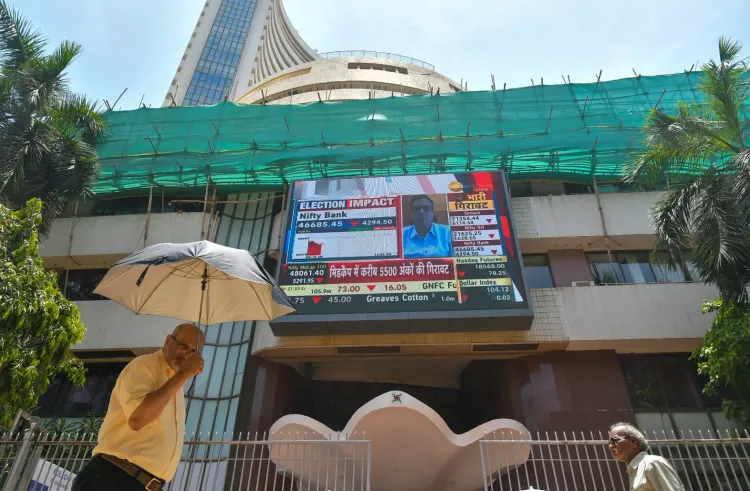Did the Sensex and Nifty Close Lower Amid Consolidation as Investors Await a Trade Deal Between India and the US?

Synopsis
Key Takeaways
- Sensex closed at 83,239.7, down 0.2%
- Nifty settled at 25,405.3, down 0.19%
- Investors are cautious amid US-India trade deal hopes
- Sectoral performance varied, with some gaining while others fell
- Expectations for the Indian rupee to strengthen
Mumbai, July 3 (NationPress) The Indian stock markets concluded the day on a down note following a cautious trading session, where late selling pressure wiped out earlier gains. Investors remained alert, fueled by the prospect of a potential trade deal between the US and India.
The Sensex reached an intra-day peak of 83,850 during early trading but ultimately settled 170.22 points, or 0.2%, lower at 83,239.7. Likewise, the Nifty fell by 48.1 points, or 0.19%, concluding at 25,405.3 by the end of the trading day.
Market movements were volatile on the weekly expiry day, with a slight decline marking the continuation of the current consolidation phase, according to Ajit Mishra of Religare Broking Limited.
After an initial rise, the Nifty fluctuated sharply in both directions while remaining within Wednesday's trading range, eventually closing at 25,405.30.
“Despite these fluctuations, the overall trend remains bullish and is expected to persist unless the index decisively dips below the 25,200-mark. On the upside, the 25,650–25,750 zone is projected to present immediate resistance,” Mishra added.
On the Sensex, major losers included Kotak Mahindra Bank, Bajaj Finserv, Bajaj Finance, Trent, and State Bank of India. Conversely, Maruti Suzuki India, Infosys, NTPC, Asian Paints, Hindustan Unilever, and Eternal were among the top gainers, which helped mitigate the downside.
The broader markets exhibited subdued trends, with the Nifty Midcap100 index managing to hold onto slight gains, closing flat with a positive bias. Similarly, the Nifty Smallcap100 index finished the day 0.26% higher.
In contrast, the Nifty Smallcap100 index ended the day down by 0.26%.
Among sectoral indices, the Nifty PSU Bank index saw the largest decline, dropping by 0.89% due to selling pressure in stocks such as Punjab National Bank, Union Bank of India, UCO Bank, and Central Bank of India.
Other sectors like metals, real estate, banking, and financial services also recorded losses.
However, certain segments of the market experienced buying interest, with sectors such as media, automotive, pharmaceuticals, healthcare, consumer durables, oil & gas, and FMCG managing to close in the green.
Market analysts suggest that investors will likely remain cautious in the upcoming sessions, closely monitoring global trade developments, foreign institutional investor activity, and critical economic indicators.
Meanwhile, the Indian rupee appreciated to its highest level in a month, largely due to expected foreign capital inflows and a positive outlook regarding an upcoming trade agreement with the US.
“In the short term, the spot USD/INR exchange rate is projected to find support at 84.95, with resistance at 85.70,” stated Dilip Parmar of HDFC Securities.









